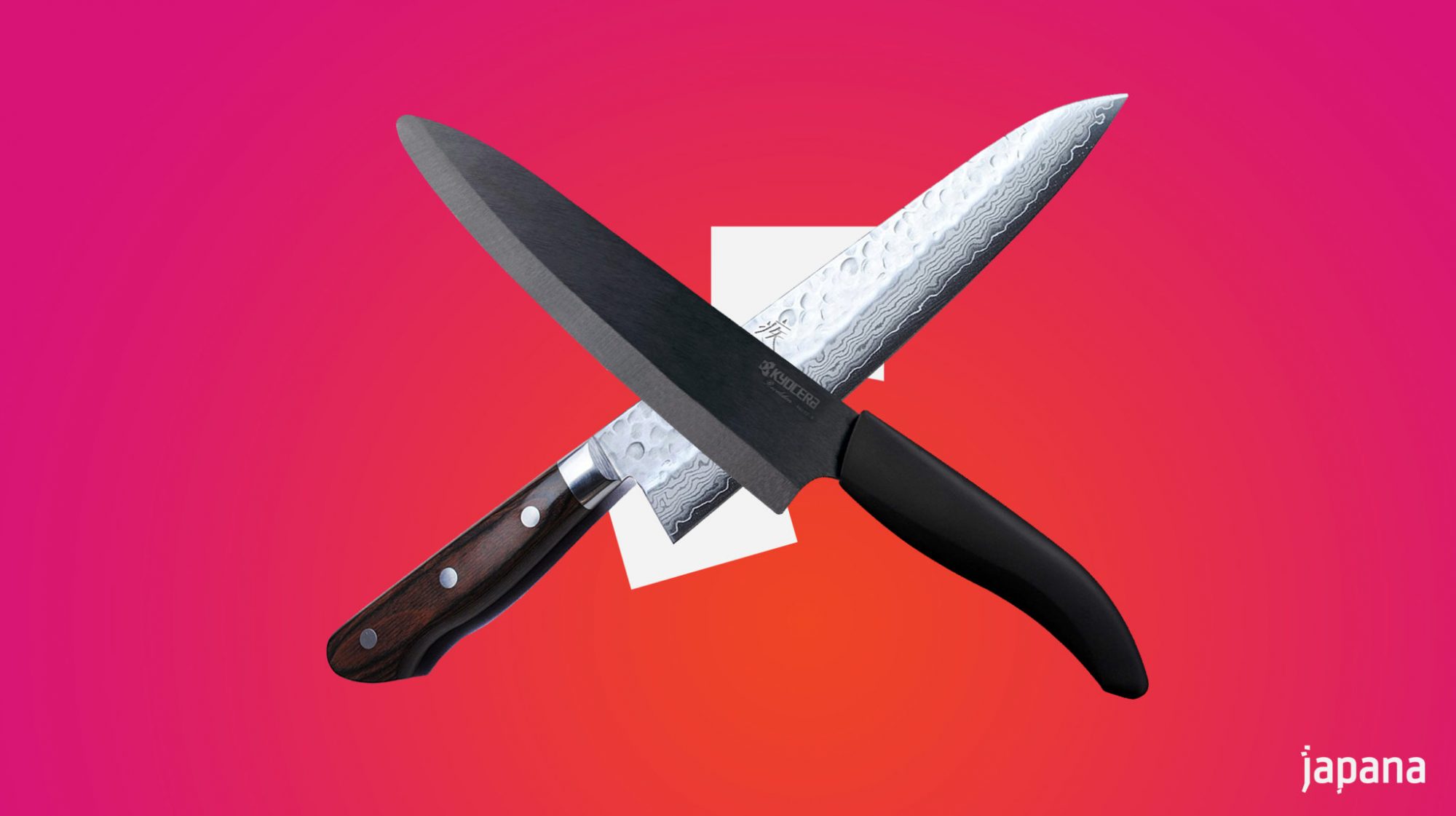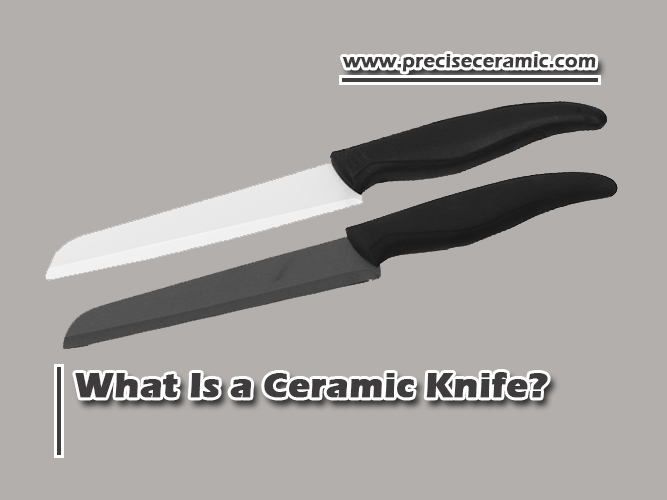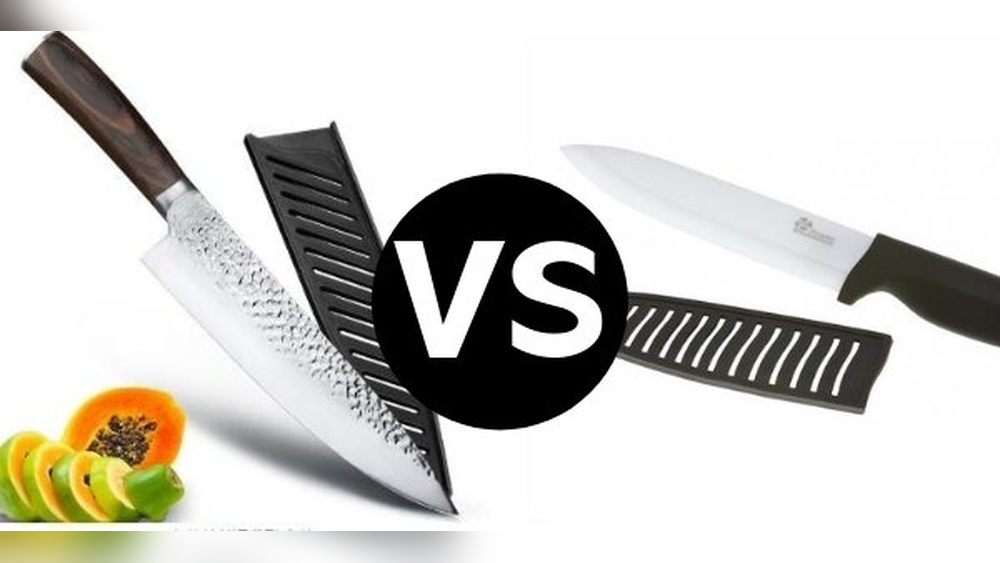When it comes to choosing the perfect knife for your kitchen, you might wonder how ceramic knives differ from steel knives—and which one suits your needs best. You want a blade that stays sharp, feels comfortable in your hand, and handles your daily tasks without hassle.
Ceramic knives promise long-lasting sharpness and a lightweight feel, but can they handle heavy-duty chopping? Steel knives offer durability and versatility, yet they require more upkeep to stay in top shape. Understanding these differences can save you time, money, and frustration.
Keep reading to discover how these two types of knives stack up, so you can make the smartest choice for your cooking style.
Ceramic Knife Features
Ceramic knives have unique features that set them apart from steel knives. These features make them a popular choice for specific kitchen tasks. Understanding these characteristics helps you know when to use ceramic knives and what to expect from them.
Sharpness And Edge Retention
Ceramic knives are extremely sharp. They hold their edge much longer than steel knives. This sharpness makes cutting smooth and precise. The hardness of ceramic material keeps the blade from dulling quickly. You need to sharpen ceramic knives less often. This saves time and effort in the kitchen.
Lightweight Design
Ceramic knives are much lighter than steel knives. This lightweight design reduces hand fatigue during long cutting sessions. It also makes the knife easier to control for delicate tasks. The light feel helps in slicing thin pieces without applying extra pressure. This feature is especially helpful for people with weaker hands.
Non-reactive Surface
The surface of ceramic knives is non-reactive. This means they do not react with acidic or strong-smelling foods. The knife won’t change the taste or smell of your ingredients. Ceramic blades also resist stains and rust. This keeps them clean and hygienic for food preparation. You can trust ceramic knives for fresh and pure flavors.
Steel Knife Features
Steel knives have unique features that make them a popular choice in kitchens worldwide. Their strength and versatility suit many cooking tasks. Understanding these features helps in choosing the right knife for your needs.
Durability And Strength
Steel knives are known for their durability. They can withstand heavy use without breaking easily. Their toughness allows them to handle hard foods like bones and frozen items. This strength makes them reliable for many kitchen tasks.
Versatility In Use
Steel knives work well for various cutting needs. They can chop, slice, dice, and even pry open containers. This versatility means one steel knife can replace several other tools. Many chefs prefer steel knives for this reason.
Ease Of Sharpening
Steel knives are easier to sharpen compared to ceramic knives. They can be sharpened at home using common tools. This makes maintaining a sharp edge simple and cost-effective. A sharp steel knife improves cutting performance and safety.
Ceramic Knife Advantages
Ceramic knives offer distinct advantages over steel knives, especially in everyday kitchen tasks. Their unique material gives them qualities that many cooks appreciate for specific uses. These benefits make ceramic knives a valuable tool for slicing fruits, vegetables, and boneless meats with ease.
Long-lasting Sharpness
Ceramic blades stay sharp much longer than steel blades. The hardness of ceramic material keeps the edge intact for years. This means fewer sharpening sessions and consistent cutting performance. Sharp blades cut cleanly, which helps maintain food texture and appearance.
Reduced Hand Fatigue
Ceramic knives weigh less than steel knives. Their lightweight design reduces strain on the wrist and hand during cutting. This makes them comfortable to use for longer periods. Less fatigue means more precise and safer slicing.
Resistance To Rust And Odors
Ceramic is non-metallic and does not rust. It also resists stains and does not absorb food smells. This keeps the knife clean and fresh after every use. The non-porous surface helps maintain hygiene and prevents flavor transfer between foods.

Credit: oishya.com
Steel Knife Advantages
Steel knives have been a kitchen staple for centuries. Their design and material offer key benefits that ceramic knives cannot match. These advantages make steel knives a reliable choice for many cooking tasks. Understanding these benefits helps you choose the right knife for your needs.
Impact Resistance
Steel knives are strong and flexible. They can handle hard impacts without breaking. This toughness allows them to withstand accidental drops or knocks. Ceramic knives, in contrast, can chip or crack easily from impact. Steel blades hold up better under rough use.
Suitable For Heavy-duty Tasks
Steel knives perform well in tough kitchen jobs. Cutting through bone, frozen foods, or thick meat requires strength. Steel blades can twist and pry without damage. Ceramic knives are brittle and may break during such tasks. Steel knives offer more versatility for heavy-duty cutting.
Simple Maintenance
Maintaining steel knives is easier for most people. Steel blades sharpen quickly with common tools. You can restore a sharp edge at home without special equipment. Steel knives need regular honing to stay sharp but do not require complex care. Ceramic knives need special diamond sharpeners and professional help.
Ceramic Knife Drawbacks
Ceramic knives offer many benefits, but they also have notable drawbacks. Understanding these limits helps in choosing the right knife for your kitchen. Ceramic blades are sharp and light but lack the toughness of steel. Their unique material creates some challenges that affect how you use and maintain them.
Brittleness And Chipping
Ceramic knives are hard but brittle. They can chip or crack if dropped or twisted. Cutting hard items like bones or frozen foods can damage the blade. This fragility means you must handle ceramic knives with extra care. Steel knives are much less likely to break under similar conditions.
Sharpening Challenges
Ceramic blades need special tools for sharpening. Regular sharpeners do not work well. Diamond sharpening stones are required to restore their edge. This makes sharpening ceramic knives harder for most home cooks. Steel knives are easier to sharpen with common tools.
Limited Task Suitability
Ceramic knives are best for light cutting tasks. They work well on fruits, vegetables, and boneless meats. These knives are not good for prying, twisting, or heavy-duty jobs. Steel knives handle a wider range of kitchen tasks and tough materials without damage.

Credit: www.youtube.com
Steel Knife Drawbacks
Steel knives have long been a staple in kitchens worldwide. Despite their popularity, they come with notable drawbacks. Understanding these issues helps explain why some cooks prefer ceramic alternatives. Below, we explore key disadvantages of steel knives.
Faster Dulling
Steel blades lose their sharpness quicker than ceramic knives. Frequent use wears down the edge faster. This means more time spent sharpening. Dull knives can make cutting harder and less safe.
Heavier Weight
Steel knives are generally heavier than ceramic ones. This extra weight can cause hand fatigue during long cooking sessions. Lightweight ceramic knives offer more comfort for extended use. Heavy knives also require more strength to handle properly.
Potential For Rust And Odor Transfer
Steel blades can rust if not dried or stored correctly. Rust damages the knife and reduces its lifespan. Steel may also absorb odors from foods like garlic or fish. These smells can transfer to other ingredients, affecting taste. Ceramic knives do not have this problem due to their non-porous surface.
Choosing Between Ceramic And Steel
Choosing between ceramic and steel knives depends on your cooking needs and preferences. Both have strengths and weaknesses that affect performance in the kitchen. Understanding these differences helps pick the right knife for each task. Consider sharpness, durability, and maintenance before deciding.
Task-specific Recommendations
Ceramic knives work best for slicing fruits, vegetables, and boneless meats. They cut cleanly without bruising or transferring flavors. Steel knives handle tougher jobs like cutting bone, frozen foods, and dense materials. They are better for chopping, prying, and twisting actions. Pick ceramic for precision and steel for heavy-duty use.
Balancing Sharpness And Durability
Ceramic knives stay sharper longer but can chip or break easily. They require gentle use and careful storage. Steel knives dull faster but resist chipping and bending. They tolerate rough handling and impact better. Balance sharpness needs with durability based on your cooking habits.
Maintenance Considerations
Ceramic knives need special sharpening tools and skills. Professional sharpening is often necessary. Steel knives sharpen easily at home with common sharpeners. Ceramic blades resist rust and stains, while steel requires regular cleaning and drying. Maintenance effort varies with material choice.

Credit: www.preciseceramic.com
Frequently Asked Questions
Is A Ceramic Knife Better Than Steel?
Ceramic knives stay sharper longer, resist rust, and are lightweight but can chip easily. Steel knives are tougher, more versatile, and easier to sharpen, though they dull faster and may rust. Choose ceramic for light, precise cutting and steel for heavy-duty tasks.
Is Ceramic Blade Better Than Steel?
Ceramic blades stay sharper longer, resist rust, and are lightweight, but they chip easily. Steel blades are durable, versatile, and easier to sharpen but dull faster and can rust. Choose ceramic for light, precise slicing; pick steel for heavy-duty kitchen tasks.
What Is The Main Advantage Of A Ceramic Knife?
The main advantage of a ceramic knife is its superior sharpness and long-lasting edge retention. It stays sharp for years without rusting or transferring odors.
Are Ceramic Knives Sharper Than Regular Knives?
Ceramic knives are sharper and hold their edge longer than regular steel knives. They are lightweight and resist rust but can chip easily. Steel knives dull faster but are more durable and versatile for heavy tasks. Choose based on your cutting needs.
Conclusion
Choosing between ceramic and steel knives depends on your kitchen needs. Ceramic knives stay sharp longer and feel lighter. They do not rust or carry food smells. Steel knives handle tough jobs better and resist breaking. They sharpen easily and work well for many tasks.
Both types have strengths and limits. Use ceramic for gentle, precise cutting. Use steel for heavy-duty chopping and twisting. Your choice will make cooking easier and more enjoyable.

